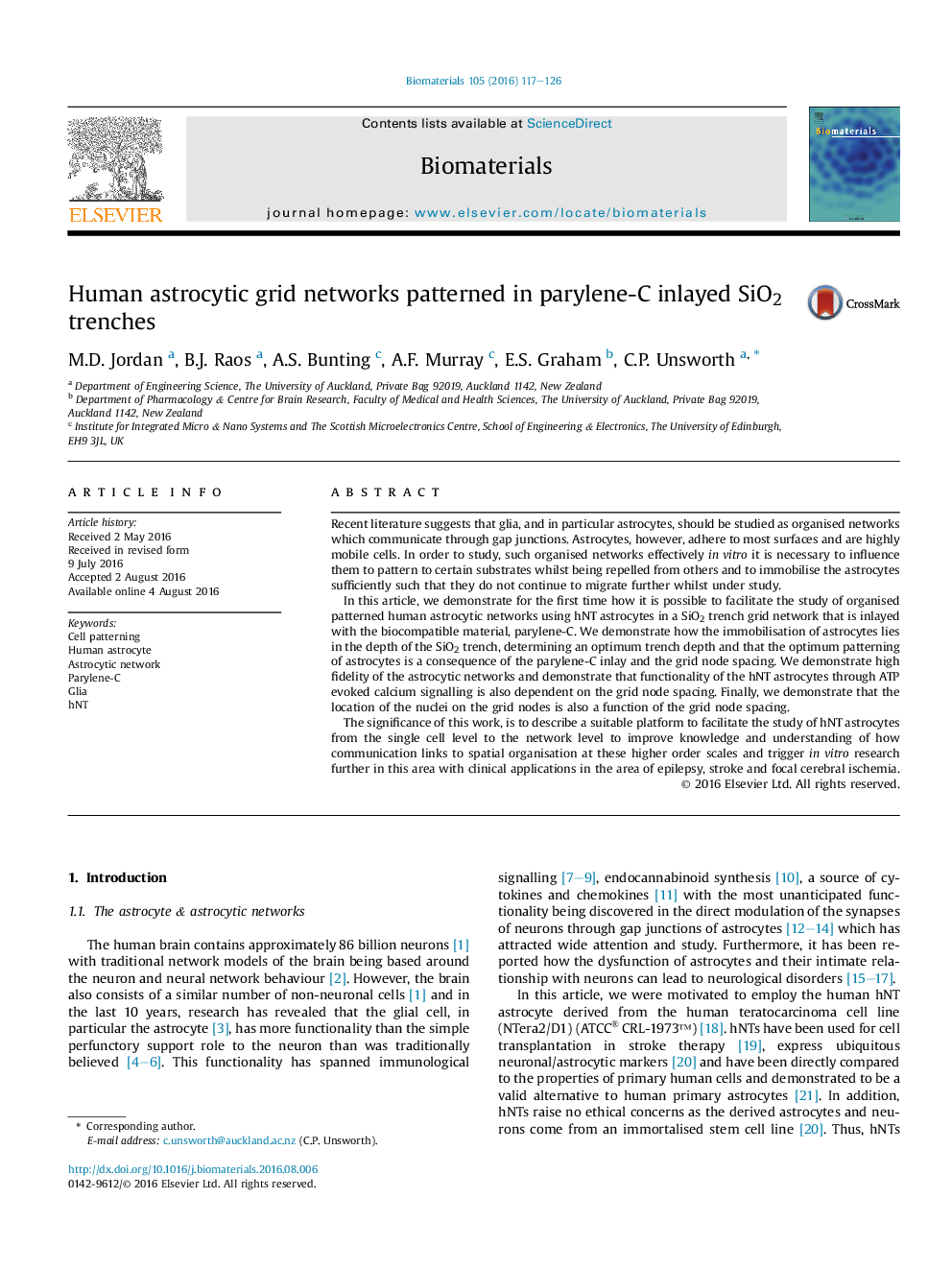| Article ID | Journal | Published Year | Pages | File Type |
|---|---|---|---|---|
| 6451110 | Biomaterials | 2016 | 10 Pages |
Recent literature suggests that glia, and in particular astrocytes, should be studied as organised networks which communicate through gap junctions. Astrocytes, however, adhere to most surfaces and are highly mobile cells. In order to study, such organised networks effectively in vitro it is necessary to influence them to pattern to certain substrates whilst being repelled from others and to immobilise the astrocytes sufficiently such that they do not continue to migrate further whilst under study.In this article, we demonstrate for the first time how it is possible to facilitate the study of organised patterned human astrocytic networks using hNT astrocytes in a SiO2 trench grid network that is inlayed with the biocompatible material, parylene-C. We demonstrate how the immobilisation of astrocytes lies in the depth of the SiO2 trench, determining an optimum trench depth and that the optimum patterning of astrocytes is a consequence of the parylene-C inlay and the grid node spacing. We demonstrate high fidelity of the astrocytic networks and demonstrate that functionality of the hNT astrocytes through ATP evoked calcium signalling is also dependent on the grid node spacing. Finally, we demonstrate that the location of the nuclei on the grid nodes is also a function of the grid node spacing.The significance of this work, is to describe a suitable platform to facilitate the study of hNT astrocytes from the single cell level to the network level to improve knowledge and understanding of how communication links to spatial organisation at these higher order scales and trigger in vitro research further in this area with clinical applications in the area of epilepsy, stroke and focal cerebral ischemia.
